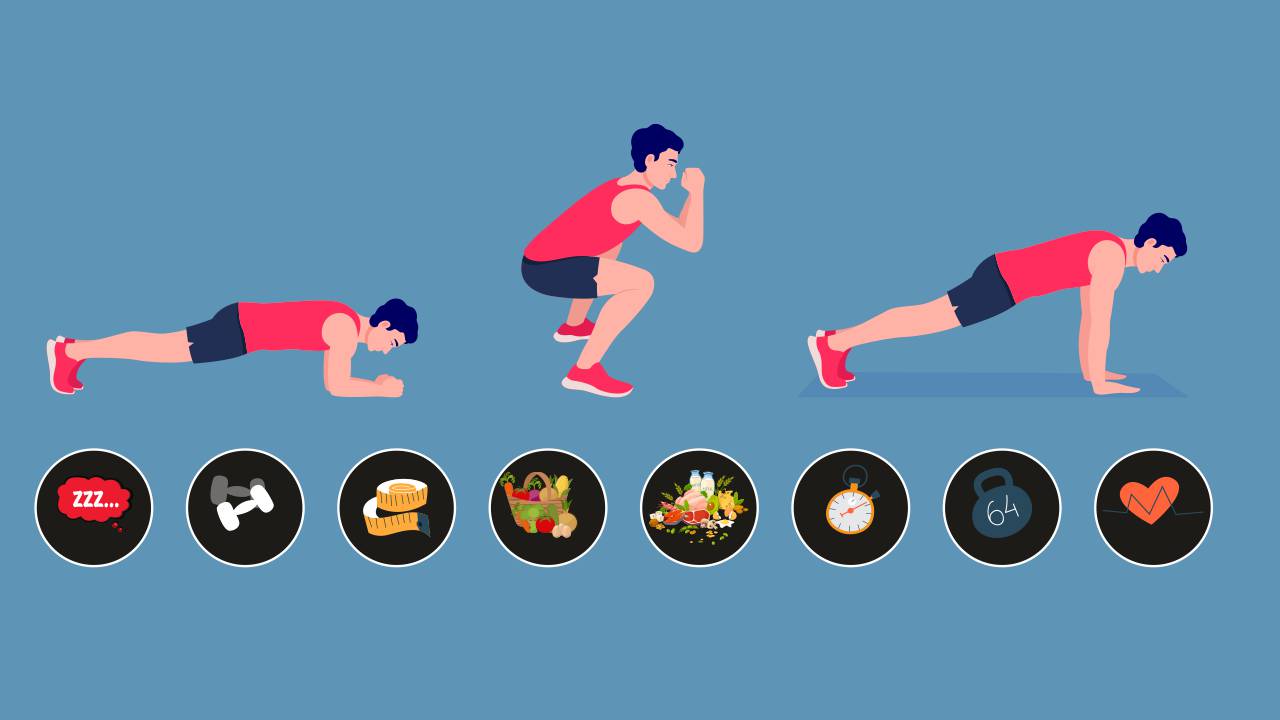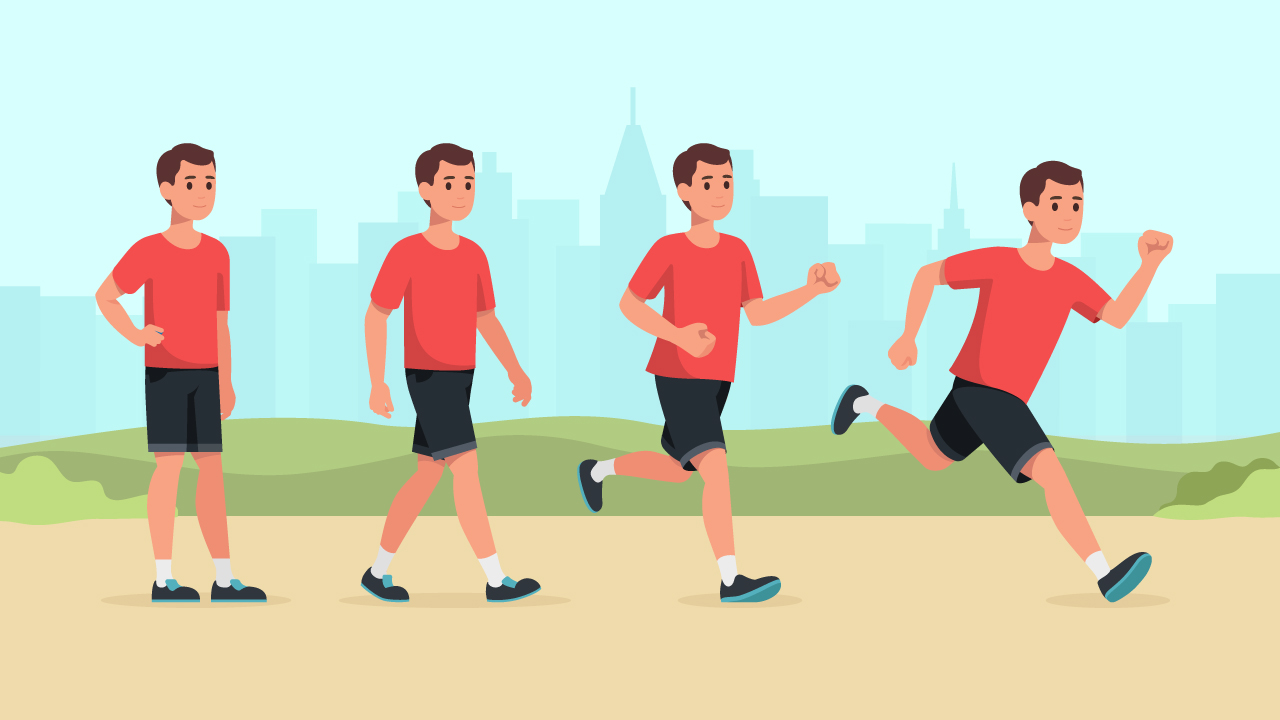
How to Measure and Maintain Your Fitness

Fitness testing is an integral aspect of any strength and conditioning program. Speak to any strength and conditioning professional, and they would tell you how they would test the fitness levels of their clients before starting them on a program.
Fitness testing is sports and fitness has varied applications, and the kind of tests one goes through are directly associated with one’s goals and nature of sport or activity. For example strength athletes undergo 1-repetition-maximum testing to assess how much weight they can lift in a particular lift; runners would go for Vo2max testing; cyclists would undertake critical power and Vo2max tests; somebody rehabilitating from an injury would undergo range of movement testing, and pain-scale testing.
Now, you don’t have to be an elite athlete to undergo fitness testing, and no matter whether your goal is to shed fat or run your fastest 100m sprint, you must assess your baseline fitness levels. It is crucial to know what your starting point is — whether you can perform one or 100 push-ups, if you can run for 1km or 10km. You can then start your workout regime at an intensity that is at par with your capacities. Ignoring this could result in loss of motivation, or even worse, a severe injury.
Benefits of fitness testing
1. It gives you a clear picture of your baseline levels of fitness
2. It helps you and your coach to design your strength and conditioning program keeping in mind your baseline physical and psychological capacities
3. It is helpful in reducing the risk of injuries
4. It gives a baseline to measure your progress over time. You can check if you are progressing towards your goals, and if your program needs any change
5. It helps in keeping you motivated and focused
6. It helps you identify muscular imbalances in the body, if any, and then plan your program accordingly
Some common fitness tests
1. Plank
| Rating | Time |
|---|---|
| Excellent | > 6 minutes |
| Very good | 4-6 minutes |
| Above average | 2-4 minutes |
| Average | 1-2 minutes |
| Below average | 30-60 seconds |
| Poor | 15-30 seconds |
| Very poor | < 15 seconds |
2. Bodyweight Squat
For men
| Age | 20-29 | 30-39 | 40-49 | 50-59 | 60+ |
|---|---|---|---|---|---|
| Excellent | >34 | >32 | >29 | >26 | >23 |
| Good | 33-34 | 30-32 | 27-29 | 24-26 | 21-23 |
| Above average | 30-32 | 27-29 | 24-26 | 21-23 | 18-20 |
| Average | 27-29 | 24-26 | 21-23 | 18-20 | 15-17 |
| Below average | 24-26 | 21-23 | 18-20 | 15-17 | 12-14 |
| Poor | 21-23 | 18-20 | 15-17 | 12-14 | 9-11 |
| Very poor | <21 | <18 | <15 | <12 | <9 |
For women
| Age | 20-29 | 30-39 | 40-49 | 50-59 | 60+ |
|---|---|---|---|---|---|
| Excellent | >29 | >26 | >23 | >20 | >17 |
| Good | 27-29 | 24-26 | 21-23 | 18-20 | 15-17 |
| Above average | 24-26 | 21-23 | 18-20 | 15-17 | 12-14 |
| Average | 21-23 | 18-20 | 15-17 | 12-14 | 9-11 |
| Below average | 18-20 | 15-17 | 12-14 | 9-11 | 6-8 |
| Poor | 15-17 | 12-14 | 9-11 | 6-8 | 3-5 |
| Very poor | <15 | <12 | <9 | <6 | <3 |
3. Push-up Test
For men
| Age | 17-19 | 20-29 | 30-39 | 40-49 | 50-59 | 60-65 |
|---|---|---|---|---|---|---|
| Excellent | >56 | >47 | >41 | >34 | >31 | >30 |
| Good | 47-56 | 39-47 | 34-41 | 28-34 | 25-31 | 24-30 |
| Above average | 35-46 | 30-39 | 25-33 | 21-28 | 18-24 | 17-23 |
| Average | 19-34 | 17-29 | 13-24 | 11-20 | 9-17 | 6-16 |
| Below average | 11-18 | 10-16 | 8-12 | 6-10 | 5-8 | 3-5 |
| Poor | 4-10 | 4-9 | 2-7 | 1-5 | 1-4 | 1-2 |
| Very poor | <4 | <4 | <2 | 0 | 0 | 0 |
For women
| Age | 17-19 | 20-29 | 30-39 | 40-49 | 50-59 | 60-65 |
|---|---|---|---|---|---|---|
| Excellent | >30 | >32 | >28 | >20 | >16 | >12 |
| Good | 22-30 | 24-32 | 21-28 | 15-20 | 13-16 | 10-12 |
| Above average | 11-21 | 14-23 | 13-20 | 10-14 | 9-12 | 6-9 |
| Average | 7-10 | 9-13 | 7-12 | 5-9 | 4-8 | 3-5 |
| Below average | 4-6 | 5-8 | 3-6 | 2-4 | 2-3 | 2 |
| Poor | 1-3 | 1-4 | 1-2 | 1 | 1 | 1 |
| Very poor | 0 | 0 | 0 | 0 | 0 | 0 |
4. 1km run test
The goal of the test is to run a distance of 1km in the shortest possible time.
5. 40-yard dash
This is a reliable test to assess acceleration, speed, and coordinative abilities.
| 40 yard sprint scores (general guidelines) | Time |
|---|---|
| College footballers | 4.6-5.9 secs |
| High school footballers | 4.9-5.6 secs |
| Recreational college athletes (male) | ~5.0 secs |
| Recreational college athletes (female) | ~5.8 secs |
From performance laboratories, to testing oneself at home or outdoors with minimal equipment, there are numerous tests that could be performed to assess different performance parameters. Make sure you assess your fitness levels from time-to-time to determine your progress and the efficiency of your regime.
Testing for fitness parameters is one small yet crucial aspect of your fitness journey. For instance, say you started with a goal of running 5km and now you have accomplished that. At this point, you will be met with questions, such as, is it possible to take it easy for a while and still maintain your fitness? Would you lose your physical performance due to detraining?
Also read: Tracking Your Fitness: Why and How Should You Do It?
How to take a break without impacting your performance
Prolonged period of rest after completing a few blocks of training, which results in partial or complete loss of training-induced physiological and performance adaptations, is termed as detraining.
During this period of detraining, multiple performance parameters such as speed, muscle mass, Vo2max levels, strength and endurance can see a significant decrease. The extent of loss depends on your levels of fitness and period of inactivity or reduced activity. Individuals with high levels of fitness experience greater reductions in performance. This is simply due the fact they were training at very high levels, and with increased levels of rest and/ or inactivity, it is almost impossible to hold on to those performance figures.
Now before you start to panic, know that even the greatest of athletes have short and planned periods of rest and reduced training time, and while some loss in performance during this period is inevitable, there are a few things you can do to reduce its extent.
Key things to keep in mind when planning your rest or detraining phase:
- Don’t become completely physically inactive
- Train for a minimum of three days per week. A good way to do this is to reduce the overall volume of training and increase the intensity of training
- Practice balanced nutrition
- Make sure you adjust your caloric intake to match the reduction in physical activity, else you risk gaining fat, and adverse changes to body composition
- Eat adequate amounts of protein
- Get optimal hours of sleep
- Restrain from smoking and excessive alcohol consumption
Following the above guidelines will ensure that the loss in performance during your detraining period is minimal or not a significant one. Also, it can help to maintain your power and strength related characteristics.
Fitness is a lifelong journey, you can’t expect to sit on your gains and hope for them to stay with you. Your body is extraordinarily capable of adapting to changing scenarios. With a planned and progressive retraining-phase, you can make up for the loss of performance in your detraining period. Typically, it takes about the same time as your detraining period to get back to previous levels, and an additional week or two to start improving on your baseline levels.
References
1. Joo C. The effects of short term detraining and retraining on physical fitness in elite soccer players. Plos One 2018; 13: e0196212.
2. Pereira L, Freitas T, Pivetti B, et al. Short-Term Detraining Does Not Impair Strength, Speed, and Power Performance in Elite Young Soccer Players. Sports 2020; 8: 141.
3. Park H, Kim S, Kim Y, et al. Effects of exercise training at lactate threshold and detraining for 12 weeks on body composition, aerobic performance, and stress related variables in obese women. Journal of Exercise Nutrition & Biochemistry 2019; 23: 22-28.
4. Cruz JRA. Changes on Total Body Water after a Detraining Period on Young Soccer Players. Medicine & Science in Sports & Exercise 2011; 43: 666.
5. Topend Sports | The Sports Fitness, Nutrition and Science Resource. Topendsports.com. 2021. https://www.topendsports.com/index.htm (accessed 2 May 2021).














